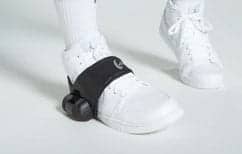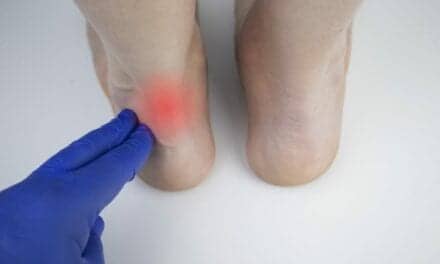The chances of experiencing an ankle sprain may be heightened among those who play sports. Ankle orthopaedic surgeons provide advice on how athletes may avoid them.
An ankle sprain refers to stretched or torn ankle ligaments. When there is a sudden twist or roll of the ankle, the ligaments on either side can tear or stretch beyond their limits, leaving your ankle swollen with limited movement.
Athletes who play sports such as basketball or volleyball tend to sprain their ankles more often because the player focuses on the ball instead of their surroundings and their feet, explains J. Chris Coetzee, MD, foot and ankle orthopaedic surgeon with Twin Cities Orthopedics, Minneapolis-St. Paul, in a media release from American Orthopaedic Foot & Ankle Society.
To prevent ankle sprains, pay attention to your body and slow down when you start to feel pain. Keep your ankles in shape by regularly working on your balance, flexibility, and strength. Make sure to wear shoes that will support your feet and ankles while you’re on the court or field, per the release.
Athletes should either tape their ankles or use an ankle brace to limit sprains, and footwear should be tailored to the specific athlete’s foot shape. The most common mistake is to have an insert in the shoe that lifts the arch too high, which increases the chances of spraining the ankle,” Coetzee says.
Athletes may think a high-top shoe would stabilize the ankle and lead to fewer ankle sprains, but studies have not found that to be the case, adds Troy S. Watson, MD, of Desert Orthopaedic Center, Las Vegas.
“In one study of basketball players, there was no significant difference between athletes who wore high-top shoes and athletes who wore low-top basketball shoes. I recommend wearing the shoe of your choice if it provides adequate support,” he notes.
If you do injure your ankle, it’s important to get treatment in a timely manner. First, visit a foot and ankle orthopaedic surgeon to evaluate your ankle and confirm there are no fractures or serious injuries that may require surgery. For less serious sprains, follow the R.I.C.E. guidelines by resting, icing, compressing, and elevating the ankle, the release continues.
“Depending on the severity of the sprain, the use of a walking boot or ankle brace may be necessary. Crutches should be considered if you are unable to bear weight on the ankle,” Watson recommends.
“Once the swelling diminishes in about a week or two, you may begin formal physical therapy. Work with a physical therapist 2 to 3 times a week, and institute a home physical therapy program under their guidance,” he continues.
For more information about caring for an injured ankle, visit FootCareMD.
[Source(s): American Orthopaedic Foot & Ankle Society, PR Newswire]




